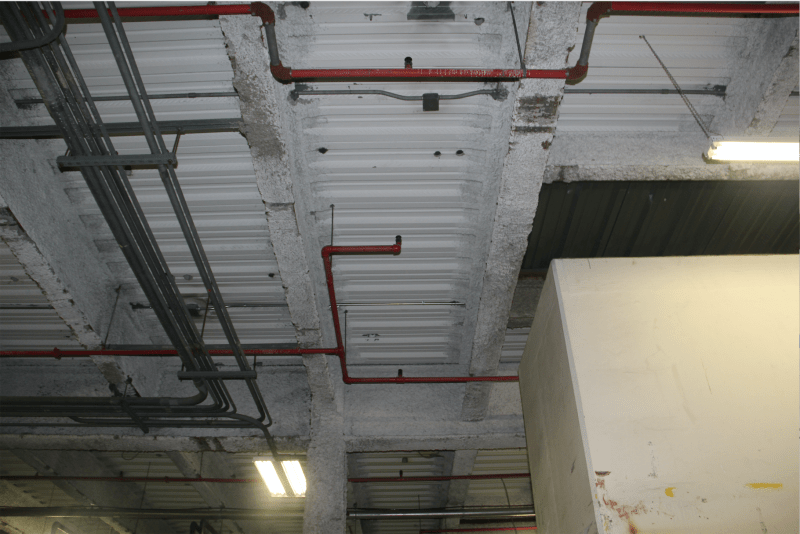Hello,
I'm analyzing a 120,000sf factory floor, 2VLI 8" total thickness, that appears to be built for WWIII for a new piece of machinery. It was constructed as an addition with W24x55s @ 6'-3" o.c. x 30' w/ W33 Girders spanning 25'. The steel is fireproofed and from historic Google Satellite images, it wasn't there in '94, but appeared in '02, so a maximum age of 27. No useful data points from the owner, auditor, or municipality. Are there any clues that would indicate what grade of steel should be used in the analysis, either 50 ksi A992/A572 or 36 ksi A36 for a building of this age? Deflection typically governs, except in one instance at a since infilled floor opening where there was previously a gigantic concrete pylon.


My second question is, what is the likelihood that the floor was designed as composite and would smaller members used to frame openings also be composite (running in same direction)? Are there rules of thumb where you only design the main floor members as composite or is there a rule of thumb to assume it is not composite at all, since you wouldn't have the headed stud properties anyway? Thank you in advance for any input,
I'm analyzing a 120,000sf factory floor, 2VLI 8" total thickness, that appears to be built for WWIII for a new piece of machinery. It was constructed as an addition with W24x55s @ 6'-3" o.c. x 30' w/ W33 Girders spanning 25'. The steel is fireproofed and from historic Google Satellite images, it wasn't there in '94, but appeared in '02, so a maximum age of 27. No useful data points from the owner, auditor, or municipality. Are there any clues that would indicate what grade of steel should be used in the analysis, either 50 ksi A992/A572 or 36 ksi A36 for a building of this age? Deflection typically governs, except in one instance at a since infilled floor opening where there was previously a gigantic concrete pylon.


My second question is, what is the likelihood that the floor was designed as composite and would smaller members used to frame openings also be composite (running in same direction)? Are there rules of thumb where you only design the main floor members as composite or is there a rule of thumb to assume it is not composite at all, since you wouldn't have the headed stud properties anyway? Thank you in advance for any input,
